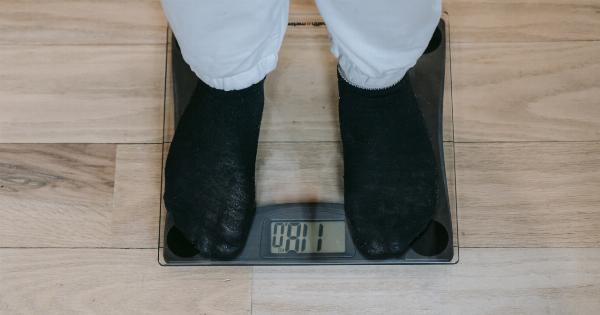Before diving into any nutrition or weight loss plan, it’s important to set clear and realistic goals. Determine how much weight you want to lose and establish a timeline for achieving your goals.
Remember to keep your goals challenging yet attainable.
Step 2: Consult a Professional
Seeking guidance from a nutritionist or registered dietitian can provide you with personalized advice and ensure you make informed decisions about your diet. They can also help you create a meal plan that suits your needs and preferences.
Step 3: Cleanse Your Pantry
Getting rid of processed and unhealthy foods is essential to kick-starting a healthy eating routine. Clear your pantry and fridge of sugary snacks, refined grains, and foods high in saturated fats.
Replace them with nutrient-dense options like fruits, vegetables, whole grains, and lean proteins.
Step 4: Portion Control
Learning proper portion sizes is a crucial step in achieving a healthy weight. Invest in a food scale or measuring cups to accurately determine portion sizes.
This will help you avoid overeating and ensure you’re consuming the right amount of nutrients.
Step 5: Prioritize Whole Foods
Whole foods, such as fruits, vegetables, whole grains, lean proteins, and healthy fats, should be the foundation of your diet. These foods are rich in essential nutrients and help keep you feeling satisfied, making weight loss easier.
Step 6: Hydration is Key
Staying hydrated not only helps flush out toxins but also aids in weight loss. Opt for water or herbal tea rather than sugary beverages. Stay mindful of your water intake throughout the day to ensure you’re adequately hydrated.
Step 7: Balance Macronutrients
Include a good balance of carbohydrates, proteins, and fats in your meals. Carbohydrates provide energy, proteins aid in muscle repair and maintenance, and healthy fats support brain function and keep you satiated.
Aim to get these nutrients from nutrient-dense sources.
Step 8: Meal Planning and Preparation
Plan your meals in advance to avoid impulsive food choices. Dedicate time each week to meal prep, ensuring you have nutritious and balanced meals readily available. This helps you resist unhealthy options when you’re pressed for time.
Step 9: Mindful Eating
Eat slowly, savoring each bite, and pay attention to your body’s hunger and fullness cues. Mindful eating helps you develop a healthier relationship with food and prevents overeating.
Step 10: Get Moving
Incorporating regular exercise into your lifestyle is essential for healthy weight loss. Aim for a mix of cardiovascular exercises, strength training, and flexibility exercises. Find activities you enjoy to make exercise a regular habit.
Step 11: Monitor Progress
Keep track of your nutrition and weight loss progress. This includes monitoring your calorie intake, tracking your exercise routine, and recording your weight and measurements.
Regularly assessing your progress will help you stay motivated and make necessary adjustments.
Step 12: Stay Consistent
Consistency is key when it comes to achieving long-term weight loss and overall health. Stick to your nutrition and fitness routine even on challenging days.
Remember, each day is an opportunity to make healthier choices that bring you closer to your goals.































